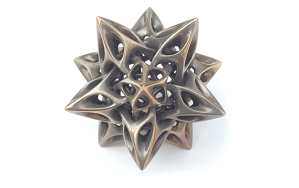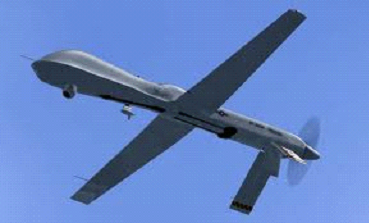Selective Laser Sintering, or SLS, is one of the most popular 3D printing technologies commonly used for prototyping and product development. In principle, it’s very much like SLA (stereolithography) – a laser “draws” cross-sections of the printed part on the surface of the raw material.
—–
Special End-of-the-Year Offer: Get 20% off all TurboCAD v20 products, including upgrades. Use coupon code TCfall20a.
—–
However, there is a substantial difference between SLS and SLA: while SLA is limited to a liquid polymer, SLS can use a wide range of powdered materials, from nylon, elastomer and polymer to metal powders.
This makes SLS 3D printers suitable for rapid creation of relatively robust parts that can be used as concept models, functional prototypes (when using materials such as DuraForm PA or DuraForm GF) or even as end-use parts – in dentistry, aerospace and other industries. You may not be able to make a shuttle – but how about printing a drone? Yes, SLS 3D printing technology is being increasingly used in production of unmanned vehicle parts . . . and other, no less interesting, things.
If you’re interested in an SLS 3D printer, be prepared to spend a bit of coin on a commercial-grade model, like the EOS 3D printers.
How does Selective Laser Sintering work?
As mentioned, SLS is very similar to SLA. First, a 3D software model of the part is created. Then, it’s converted into an STL file – an industry standard extension file – that stores your 3D model as a set of cross-sections. Next, a laser “draws” one of those cross-sections on the surface of a container filled with raw material – say, titanium powder. Finally, a thin new layer of powder is added on top of the already-drawn cross-section, the laser goes at it again, and, layer by layer, the desired item is produced. The following short video outlines the whole process.
Advantages of SLS
The SLS process has more advantages than SLA printing. First of all, you don’t have to worry about supports. If you want to make a large capital letter T with SLA 3D printing technology, the vertical parts would likely need support. Sometimes this process of creating supports is automated, but sometimes it’s not. Either way, you’ll have to remove the supports later. With selective laser sintering, however, the powder itself may actually act as a support – and this decreases both raw material usage and the time needed to make the part.
Second, SLS, unlike SLA, doesn’t need post-curing or anything of that nature. You may need to heat up the powder to speed up the work of the laser, but that’s it. Since there’s no curing, the finished product won’t lose its shape with time.
Third, flexible snaps and living hinges can be made since SLS parts are flexible. With SLA, the parst are rigid and flexibility is impossible.
SLS is economical and fast, and is great for prototyping. You might think that SLS is the best 3D printing technology there is!
But it isn’t.
Disadvantages of SLS
Yes, selective laser sintering has some disadvantages. Probably the biggest of them is that the fabricated prototypes are porous. This depends on the material used, as well as a few other factors. But generally you can expect an SLS-made part to have a rough, porous surface – and it probably won’t be as strong as a molded part, either. However, SLS parts can be coated to smooth out the surface and make the part stronger.
SLS is a more complex operation, and has more build variables. For this reason, the part might not be printed as accurately as a part made using stereolithography. The complexity of the build variables can make it a little more difficult to get the precise temperatures required, and excess fused material can compromise dimensional accuracy.
Still, SLS is a great 3D printing technology. You can create parts of almost any complexity out of a wide variety of materials, quickly and cheaply. It may not be as precise as SLA, but it’s much more robust, easier to machine, and can be used to create not only concept models, but parts that are very close in properties to a molded piece, depending on the materials used.
So if you’re making a concept model, go with SLA. If you want to make a part for functional testing, or perhaps you need to build a drone from scratch, choose selective laser sintering.



What type of coating would you put on to make it not as porous and smoother? The SLS part I have is made of nylon.
Most coatings like paint will stick to SLS parts. I.e You can just paint it. You can also apply a varnish, but you may want to test a section first. A clearcoat, like nail polish, should work as well.
any one know where to buy one of these printers?
This would be a good place to look:
http://www.3dsystems.com/3d-printers/production/spro-60-hd#.UihmO9LVB8E
Although given the cost of these machines (they’re not those cheap desktop ones) I’d have thought anybody interested in acquiring one would have been able to manage the 5 second google search.
Hi, I’m interested in buying a sls machine for metal products.
I followed the above mentioned link, however the machine is just for plastic. Can you recommend me another website / company? And if possible do you have any idea about the price range for these machines?
Thank you
Sorry for the late reply, but perhaps this will help someone else out.
3D Systems has a “Direct Metal Printing” process which looks a lot like SLS. You can check out the machines here:
http://www.3dsystems.com/3d-printers/production/prox-100
They are not hobby printers, though, so I expect the cost to be pretty high.
How much do they costs in Rands? Is their quality reliable? Any limitations?